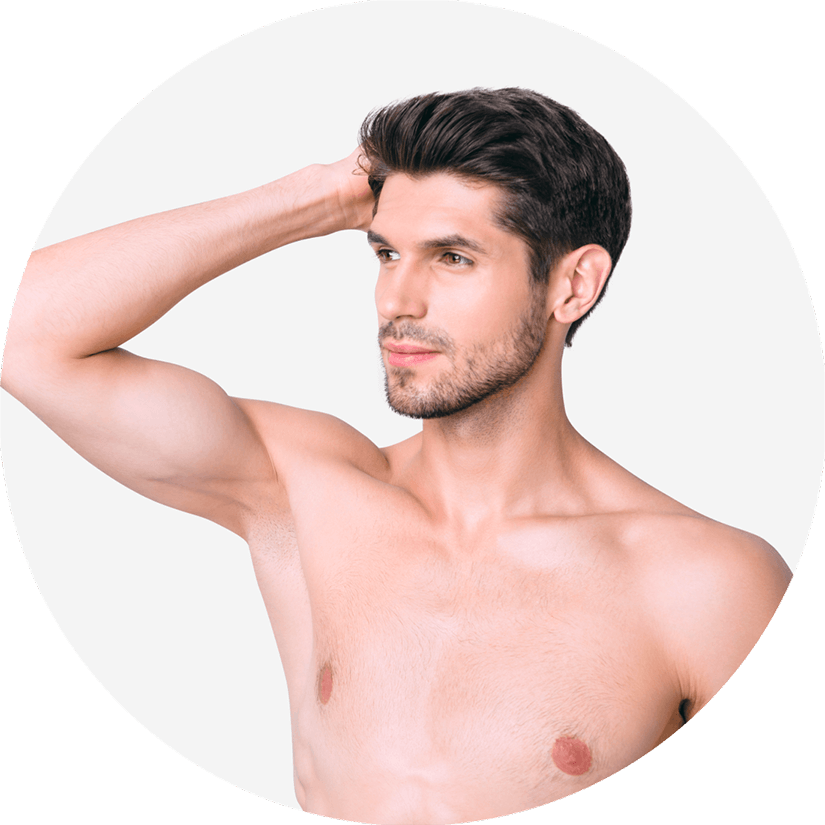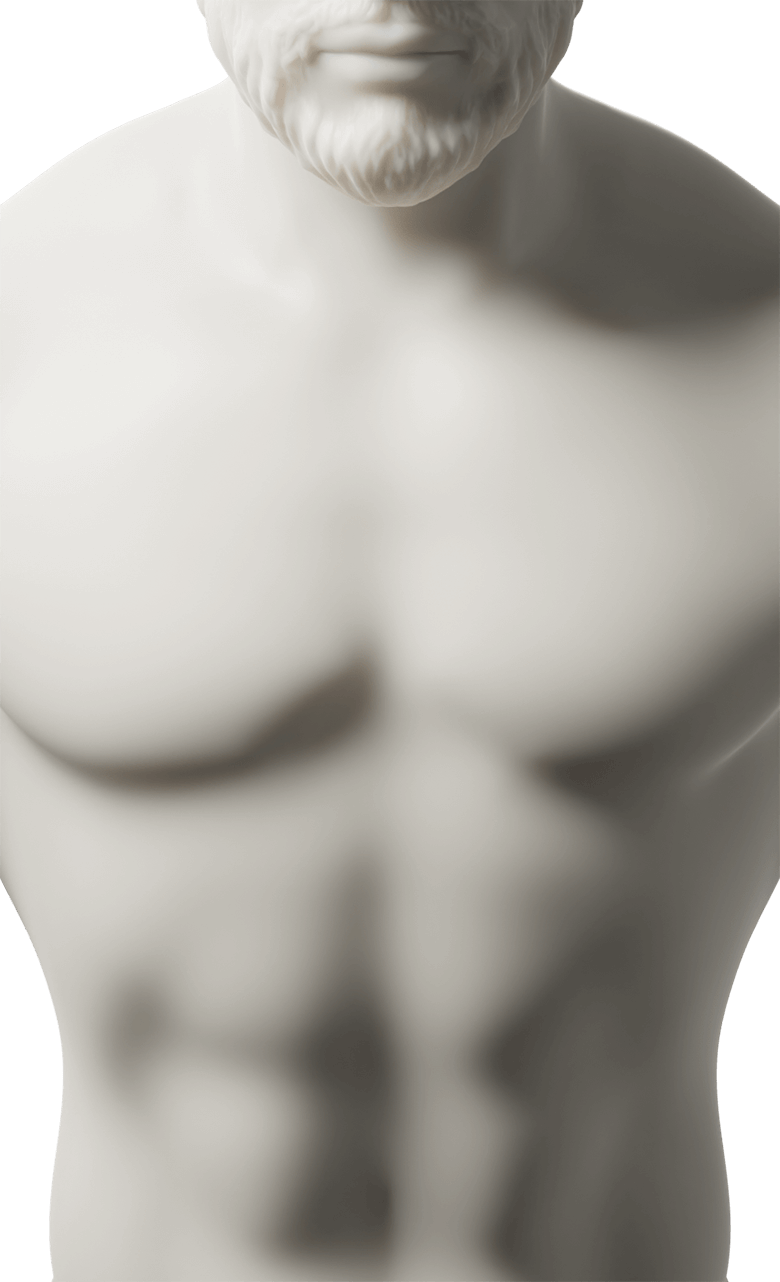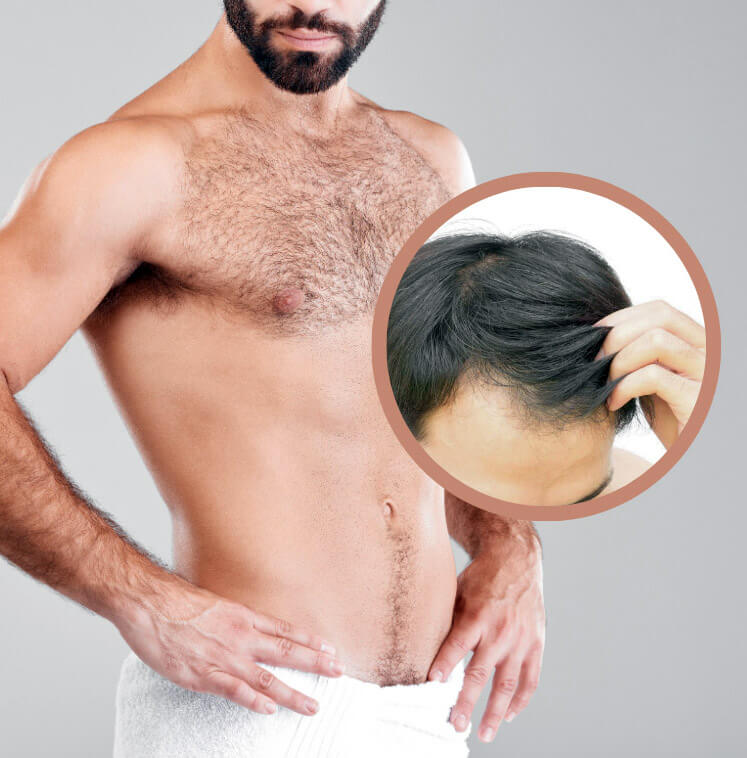Body Hair Transplant – Expanding Possibilities Beyond the Scalp
Body Hair Transplant (BHT) is an innovative solution for individuals with insufficient scalp donor hair. By harvesting follicles from areas such as the chest, beard, arms, or legs, this method provides an alternative source for hair restoration. It is especially useful for patients with extensive hair loss or previous failed transplants. Though technically more complex, body hair offers viable grafts that can enhance density and coverage where needed most.
Your Hair Journey at a Glance
Discover the key steps of your personalized hair restoration journey. From consultation to aftercare, we make every step simple and clear for you. Let’s take a closer look at how it all comes together.
Step 1: Free Consultation
Step 2: Hair Analysis
Step 3: Treatment Planning
Step 4: Travel & Procedure
Discover the Truth: 500+ Genuine Patient Reviews Speak for Themselves
See what our patients have to say about their transformative journey and outstanding results with our expert care.
OUR CLINIC & HOTEL
Scientific Hair Transplant Clinic
What is a Body Hair Transplant?
Definition and Overview
A Body Hair Transplant (BHT) is an advanced hair restoration procedure that uses hair from body areas such as the beard, chest, abdomen, back, arms, or legs as donor grafts for transplantation to the scalp. This technique is most commonly employed when the scalp donor area lacks sufficient density or has been overharvested due to previous procedures. BHT extends the boundaries of traditional transplantation and offers a viable solution for patients with extensive hair loss.
When and Why Body Hair is Used
- In cases of advanced baldness where scalp donor supply is exhausted
- For patients seeking repair of previous poor transplant results
- To improve density in targeted areas like the crown or mid-scalp
- When beard or chest hair is thick and viable for blending
Suitable Donor Areas for Body Hair Transplantation
Most Common Donor Sources
- Beard: Considered the best body hair source due to its thickness and growth rate.
- Chest: Offers moderate-density hair with longer growth phases.
- Abdomen and Back: Typically lower yield, used as a secondary option.
- Legs and Arms: Rarely used; thinner, slower-growing hair.
Selection Based on Hair Quality
The choice of donor site depends on:
- Hair texture and curl pattern
- Growth phase duration (anagen phase)
- Compatibility with scalp hair in terms of density and blending


How Body Hair Transplant Differs from Traditional FUE
Extraction Technique and Tools
The same FUE (Follicular Unit Extraction) method is used, but the angle, depth, and direction of body hair growth vary widely compared to scalp hair. This makes extraction more time-consuming and requires:
- Smaller punch sizes to match follicle caliber
- Greater skill to avoid transection or buried grafts
- Slower harvesting to protect follicular integrity
Graft Preparation and Implantation
Once extracted, body hair grafts are sorted by type and location. Surgeons often combine:
- Beard hair for density in the crown or mid-scalp
- Chest or abdomen hair for filler grafts
- Remaining scalp donor hair to maintain a natural frontal line
Who is a Good Candidate for Body Hair Transplant?
Ideal Patient Profiles
- Men with Norwood stage 5 to 7 hair loss
- Patients with limited scalp donor resources
- Individuals with strong, thick beard or chest hair
- Candidates for corrective transplant procedures
Not Recommended For
- Individuals with very sparse body hair
- Patients with curly, inconsistent, or slow-growing donor hairs
- Those seeking hairline work only, where fine-textured scalp hair is preferred
Advantages of Body Hair Transplant
Expands Donor Supply for Advanced Cases
For patients with severe baldness, body hair allows for thousands of additional grafts to be harvested. This significantly increases the coverage potential.
Useful in Repair and Reconstruction Cases
BHT is particularly helpful in:
- Correcting unnatural hairlines or scars
- Softening pluggy results from outdated transplant techniques
- Blending previous work with natural-looking density
Beard Hair Offers Superior Density
- High follicular yield per cm²
- Good thickness and similarity to scalp hair
- Often grows well in the recipient zone
Limitations and Considerations
Growth Pattern and Length Variations
- Body hair does not grow as long or as fast as scalp hair
- It may require frequent trimming to match scalp hair appearance
- Growth cycles (anagen and telogen) are shorter, affecting density
Aesthetic Planning is Essential
Strategic graft placement is necessary to blend different textures:
- Use finer scalp hair at the frontal hairline
- Place beard or chest hair in the mid-scalp and crown
- Combine graft types to simulate natural variation
Surgical Skill and Experience Matter
Performing BHT requires advanced surgical ability due to:
- Difficult follicle angles
- Varying skin thickness across body regions
- Graft fragility and implantation technique


Recovery and Expected Results
Healing Process
- Donor body areas heal quickly with minimal scarring
- Recipient area follows a typical post-transplant cycle
- Temporary redness or ingrown hairs may occur in extraction sites
Hair Growth Timeline
| Timeframe | What to Expect |
|---|---|
| 1–3 months | Shedding phase of transplanted hair |
| 4–6 months | New growth becomes visible |
| 9–12 months | Full results achieved |
Long-Term Outlook
- Body hair transplanted to the scalp continues to grow permanently
- Textural difference may persist but is often unnoticeable
- Beard hair generally yields the most satisfactory long-term results
Body Hair Transplant – Frequently Asked Questions
We have compiled the most frequently asked questions about the topics you are curious about. You can contact us for more information.
Body Hair Transplant involves extracting hair follicles from body areas (typically chest, beard, abdomen, or back) and implanting them into the scalp. The process is similar to FUE, using a micro-punch to individually extract grafts. These grafts are then placed in balding or thinning areas, helping improve hair density or repair previous transplant scars.
This method is ideal for:
-
Patients with limited scalp donor availability
-
Individuals seeking repair from a failed or over-harvested prior transplant
-
Those with thick, strong body or beard hair
-
Men with diffuse thinning who require additional donor sources
The most commonly used donor areas include:
-
Beard – High yield and similar texture to scalp hair
-
Chest – Useful for density building
-
Back, arms, legs – Typically used as secondary sources
Beard and chest hair are preferred due to better growth characteristics and ease of extraction.
Body hairs retain their original characteristics (such as curl, growth rate, and texture) even after being transplanted to the scalp. However, they often blend well when mixed strategically with scalp hair. In many cases, beard hair is used for density and mixed with scalp follicles for a natural result.
Yes. Just like scalp grafts, transplanted body hairs are permanent and continue to grow in the recipient area. However, their growth cycles may be shorter than scalp hairs, so final styling results may vary. Proper planning and experienced execution are essential for natural and lasting outcomes.











